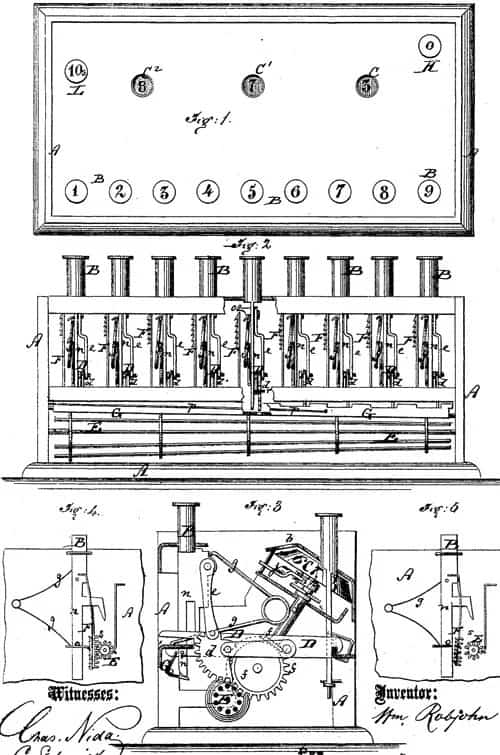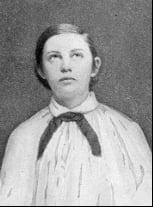
The early work of John Henry and Caleb Sherwood Odell in their pipe organ building firm cannot be discussed without mentioning the Robjohn brothers, William and Thomas. They both made a significant contribution to organ building which made the Odell firm enjoy early success and massive popularity.
Who Was William Robjohn?
William Robjohn was an English-born American organ builder. He was born in Tavistock, Devon, England, on 14 February 1803, to Thomas Robjohn (1772-1835) and had a brother Thomas (1809-1874), and a sister Mary. Before emigrating with his family to the United States of America in 1857, William had been a foreman for the famous London-based organ makers Gray and Davison.
Quick Facts
- Full Name
- William Robjohn
- Birth
- February 14, 1803
- Death
- April 29, 1878
- Net Worth
- NA
- Children
- Thomas Robjohn, Frederic Robjohn (1855-1867), and William James Robjohn (1843-1920).
- Nationality
- English
- Place of Birth
- Tavistock, Devon, England,
- Fields of Expertise
- [“Inventor”]
- Contributions
- Organ builder, calculating machine, Adding Machine
Early Life
In his early years, William, together with his brother Thomas worked as organ builders in England. In the early 1830s, Thomas moved to Next York, the USA, leaving the rest of the family in England. As mentioned earlier, William was working as a foreman for Gray and Davison until his brother insisted on his emigration. In New York, Thomas had established himself as an organ builder. He had become famous for some of his works, like completing the Firth and Hall organ for Trinity Church, Wall Street in 1840, as well as organs for South Dutch Church and Rutgers Street Presbyterian.
Career
William’s career started in England, where he worked together with his brother as organ builders.
Gray and Davison
When his brother left for the USA in the mid-1830s, William joined the famous London-based organ makers Gray and Davison as a foreman until the late 1850s.
After leaving the foreman work at Gray and Davison and emigrating to New York, William joined his brother Thomas who by that time was doing well as an organ builder. From 1858 Robjohn brothers worked together and built several organs, characterized by splendid, carved casework, mechanical ingenuity, and forward-looking tonal design. However, they didn’t last long. By 1860 they had encountered great financial difficulties, which forced them to give up on independent organ building.
Odell
When they could no longer work independently, William and Thomas went to work full-time as voicers for John Henry and Caleb Sherwood Odell in their pipe organ building firm. They took Levi Stewart with them, who played a crucial role in constructing Odell Opus 1 and gained credit for it even though the organ was actually commissioned to Thomas Robjohn. Their contribution saw the firm grow rapidly and become established amid fierce competition. By 1870, Odell was so popular, so much so it was turning out an average of 10 to 12 organs a year.
What is William Robjohn Known For?
William Robjohn and his brother were excellent organ builders and mechanics, either in wood or metal. Thomas Robjohn is a holder of quite a few US patents for musical instruments, inkstands, road rammer, sewing machines tools, etc. William Robjohn also is a holder of several patents—for pine organs, a liquid meter, and, which is crucial for us as computer-geeks :-), for a calculating machine of interesting construction (US patent 130244 of 1872).
William Robjohns machine was a single-digit adding device (i.e., having the capacity for adding but one digital column at a time) and is the first key-driven calculator with positive control.
The machine had three slight openings in the casing, as shown in the figure below, through which the registration of the numeral wheels could be read. The numeral wheels were connected by devices for carrying the tens, one operating between units and tens wheel and another between the tens and hundreds wheel. The unit wheel was connected by gearing to a long pin-wheel rotor so that any rotation of the rotor would give a like rotation to the unit’s numeral wheel, to which it was entrained by gearing.
An engaging and disengaging sector gear device attached to each of the 9 digital keys engaged the rotor and turned it on upon the depression of its attached key. A stop device supplied for the key action was, in turn, supposed to stop the gear action.
It will be noted that the engaging and disengaging gear device is here shown in the form of a gear-toothed rack and that the key stem is provided with a projecting arm ending in a downwardly projecting tooth or detent, which may engage the rotor and stop it at the end of the downward key action.

The patent drawing of the William Robjohn’s Adding Machine.
While the stopping of the rotor shows a control in the machine, which takes place under direct action from the keys to prevent the overthrow of the units numeral wheels, it didn’t prevent the overflow of the higher or tens wheel, if a carry should take place. There was no provision for control of the numeral wheels under the action received from the carrying of the tens by the transfer mechanism.
William Robjohn: Marriage, Divorce, Children, and Personal Life
There’s little that is known about William Robjohn.
Net Worth
No information is available about William Robjohn net worth.
Marriage
William Robjohn was married to Harriet Robjohn.
Children
Together with his wife Harriet, William Robjohn had 3 sons: Thomas Robjohn, Frederic Robjohn (1855-1867), and William James Robjohn (1843-1920). William James Robjohn became a famous US musician and composer (under the name Caril Florio).
Tragedy
William Robjohn died on April 29, 1878 in New York.
William Robjohn: Awards and Achievements
William Robjohn was a holder for several patents, such as a patent for pine organs, a liquid meter, and a calculating machine of interesting construction (US patent 130244 of 1872.
Up Next…
We have plenty more great reads about other inventors and inventions!
- Johannes Gutenberg: One of Earth’s Most Important Inventors. After developing the movable-type printing press, Gutenberg’s invention would change the way people would have access to books.
- Meet Albert Ludlum – Engineer, Inventor, and Business Owner! Ludlum had patents dealing with adding machines and some with mining and dredging.
- Meet Nikola Tesla – Complete Biography, History, and Inventions. Find out more about this titan of American history.








